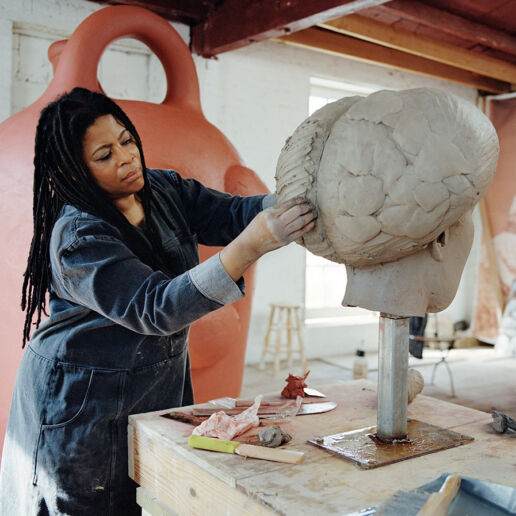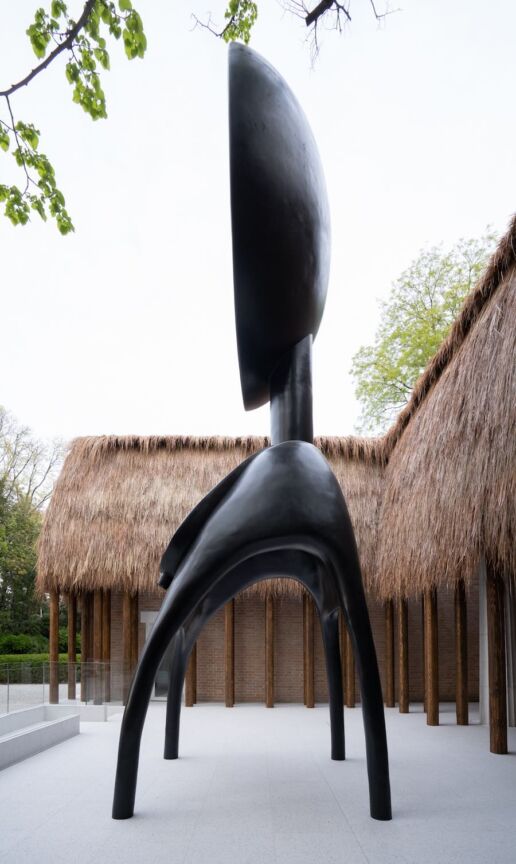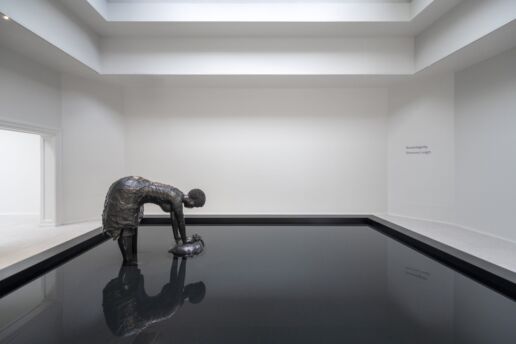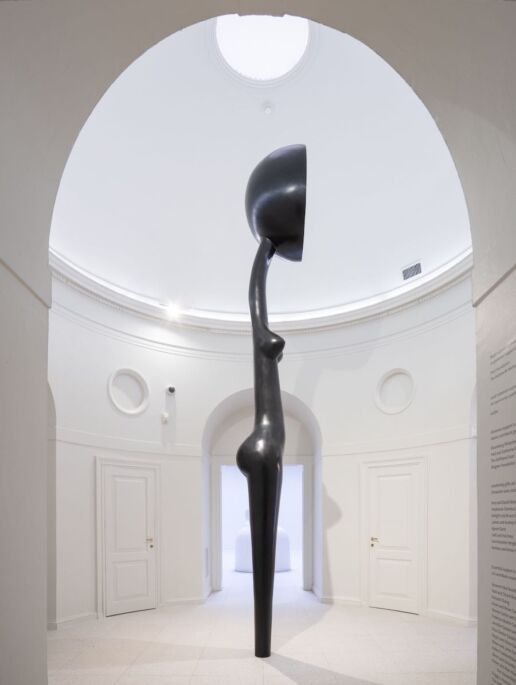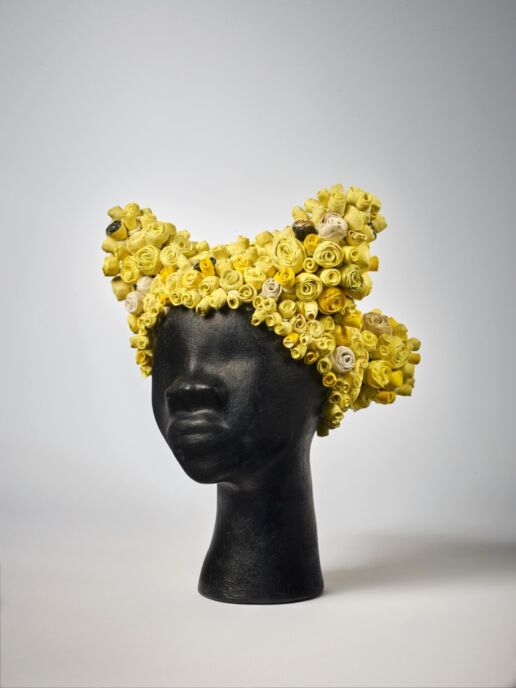REWRITING HISTORY: SIMONE LEIGH – SOVEREIGNTY
Co-curated by Boston Institute of Contemporary Art Director Jill Medvedow and Chief Curator Eva Respini, the Sovereignty exhibition opens with the contributions of the Peggy Guggenheim Collection in Venice and the Salomon R. Guggenheim Foundation in New York. As the first black female artist to represent the USA at the Venice Biennale, Leigh was also featured in the main exhibition of the 2019 Venice Biennale (curated by Alemani) with her Brick House sculpture (4.9 meters), which got her the Golden Lion Award.
One of the prevailing ideas of this year’s Venice Biennale is the need for a new heterogeneous historical narrative based on a new perception of history. Simone Leigh’s Sovereignty, which was selected for the US pavilion, also questions this need. In fact, questioning is not the right word. Leigh becomes part of the lost pieces and erased moments of history, guiding us through a new historical narrative.
This year, Leigh’s presence can be felt before you step into the pavilion. The main building, named Façade by the artist, refers to the Cameroon/Togo Grand Pavilion that opened at the 1931 Paris Colonial Exposition. As part of Leigh’s impressive display, this large straw-roofed building feels like stepping into a different narrative of written history from the very beginning. The building directs the viewer to a perspective that embraces our planet by ripping apart the architectural symbolism dedicated to a European-oriented historical and artistic narrative engrained in the viewer’s mind. Rising with grandeur right in front of the building, the imposing bronze female statue called Satellite (2022), inspired by the traditional D’mba ritual mask of the Guinean Baga people, lures the viewer further into the story.
Leigh’s works undoubtedly have a monumental effect. The comprehensive research on collective memory seeking and creating transitions between aesthetic, symbolic and ceremonial values, as well as anthropological and historical dimensions, successfully builds on this effect. Going inside the building, the same degree of monumentality can also be observed in the bronze sculpture Last Garment (2022), a depiction of a laundress hunched over a bowl of water. The work refers to a 19th-century photograph taken in Jamaica by American travel photographer C.H. Graves. Like similar images from the same period, this photograph portrays Jamaica as a ‘tropical paradise’, while feeding the stereotypes created by the booming Anglophone Caribbean tourism industry at the time. Leigh’s work and references retell centuries-old stories of fighting against racism, colonialism, sexism and white supremacy. As we confront these missing pieces, history as we know it is rearranged; new questions are asked, and new stories emerge.
Working on the subjectivity of black women, Simone reveals the origins and contexts of images and objects she collects from Africa and the diaspora across the globe. Thus, she can construct a different narrative in which the other moves closer to the centre and a new order is created in the archives of history. The female body reclaims its role in Simone’s work, yet it also acquires a monumentally expressive power. Standing in the pavilion’s rotunda, the five-metre-tall bronze statue Sentinel (2022) is a female figure associated with a spiritual symbol. Sentinel is a modern representative of the genre, which has an important place among African artwork before the common era. At the centre of a civilization that rose above slavery and colonisation, Sentinel seems to feed on a primaeval source, looks upon this world on behalf of all women, analyses it and redefines its own role. The exhibition at the Venice Biennale is open until 27 November.
About Simone Leigh:
Simone Leigh was born in 1967 in Chicago. Ranging from sculpture to video, the New York-based artist has been creating art for the past two decades. In a nutshell, Simone Leigh’s art can be described as ‘a creative and persistent struggle that aims to find the missing pieces in historical memory based on black feminist theories’. With a fascination for African art and local objects, performance and feminism, the artist describes her work as auto-ethnographic. In May 2022, the female bust ‘Birmingham’ (2012) produced using Indian ink and epoxy on terracotta and porcelain, was auctioned at Sotheby’s and sold for a record $2.2 million.


